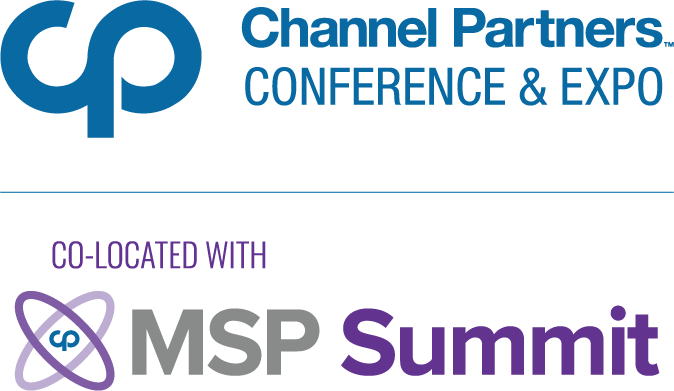Citrix, Microsoft Align on DaaS, Plan Intune Endpoint API Integration
These longtime alliance partners presented a unified front.
May 24, 2019

(Pictured above on stage Citrix Synergy 2019 are Citrix’s Brad Anderson and Microsoft’s PJ Hough.)
CITRIX SYNERGY — Citrix and Microsoft have extended their decades-long partnership with plans to release several new Windows desktop-as-a-service (DaaS) offerings and an agreement to go deeper on the integration of Microsoft’s proprietary Intune management APIs with the Citrix Endpoint Management (CEM) platform.
Brad Anderson, corporate VP overseeing the Microsoft 365 platform, joined Citrix executive VP and chief product officer PJ Hough on stage during the opening session of this annual week’s Citrix Synergy conference in Atlanta, where the two outlined several product development and go-to-market initiatives.
Microsoft, which already has shared some of its Intune APIs with Citrix and others, will add the endpoint security interfaces into CEM, the newly christened Citrix XenMobile platform. The added APIs will let Citrix CEM use the conditional access and other endpoint security features built into Intune, a key component of the Microsoft 365 cloud service platform, which includes Windows 10 and Office 365 licenses, among other options.
The integration will let managed service providers (MSPs) and customers with both Microsoft 365 and Citrix CEM use the Intune functions within the Citrix Endpoint Management platform for remote mobile endpoint management, building on the mobile application management (MAM) integration added last year. Anderson noted that 100 million devices are now licensed for Intune management, which he claimed makes it the most widely used cloud-based endpoint management service.
“We’re building a new API into Intune that will allow solutions like XenMobile to be able to send information in the cloud model that we will then be able to take and use as we determine the trust level of a device,” Anderson said of Microsoft’s plan to integrate the endpoint security interfaces with CEM. “And so, a XenMobile MDM-managed device is now going to be able to send telemetry into Intune to combine that with other data sets, and then flow into the rest of the Microsoft 365.”
The addition of the Intune endpoint management APIs into CEM is a natural extension of the integration of the MAM interfaces, said Bob O’Donnell, founder and principal analyst at Technalysis Research.
“It’s about being able to extend the reach of these tools to a wider, that’s a wider variety of physical devices,” O’Donnell said. “In today’s environments, there’s an enormous range of physical devices, and even broader range of applications and services and it’s challenging to manage these in a uniform [manner]. There’s a lot of fancy plumbing involved with this.”
Meanwhile, both companies signaled that they are on the same page with Microsoft’s forthcoming Windows Virtual Desktop (WVD), the forthcoming hosted VDI service that partners will be able to add to their managed service portfolios. While the introduction of Microsoft’s Azure-based Windows DaaS offering last September raised the specter that it may undercut Citrix’s existing virtual desktop and application services, the longtime alliance partners presented a unified front.
“This is a big innovation and it’s great to see the capabilities that you’re going to deliver natively for Windows running in Azure,” Hough said to Anderson. “And we’re just going to support that as a new type of deployment that you can manage from Citrix Cloud along with our other apps and desktop solutions.”
WVD, now in preview, introduces Azure-based multisession Windows 10 support as a service. Until now, Windows 10 multisession operation was restricted to Windows Server Remote Desktop Services (RDS). WVD will also support the digital workspace environment and …
… application compatibility offered with the Citrix Cloud portfolio of services.
“It’s the only license in the market that you can host Windows 10 desktops in a public cloud,” Anderson said. “We love the fact that Citrix is introducing [support for] this.”
It’s also the only option for those who want continued Windows 7 support after January 2020 without having to subscribe to a costly extended support plan from Microsoft. WVD includes the Windows 7 Extended Security Updates offered by Microsoft. Also included with WVD are Microsoft’s new Office 365 Virtualization enhancements via its acquisition of FSLogix. Citrix said it will provide Microsoft those WVD capabilities via the cloud-based Citrix Workspace and Citrix Virtual Apps and Desktops (until recently known as XenDesktop) service.
WVD will work on “Day 1” with the Citrix services, company officials reaffirmed this week. To ensure readiness for partners to test, the company updated its Citrix VDA stack, letting WVD testers preview several offerings including:
Citrix Workspace Premium Plus: The new Citrix Workspace experience with networking and analytics, managed in a hybrid cloud environment allowing multisession Windows 10 workloads and Windows 7 ESU running in Azure.
Citrix Virtual Apps and Desktops (aka XenDesktop): Managed in a hybrid cloud environment, the solution and the cloud service with WVD also includes multi-session Windows 10 workloads and Windows 7 ESU.
Citrix Virtual Apps (formerly XenApp Service) service and Virtual Apps Essentials: a multi-session Windows 10 service running in Azure that is also hybrid cloud-managed.
A new Citrix Managed Desktop service, launched this week and set for release later this year, will include WVD packaged with multisession Windows 10 support, will be available with Citrix-provided desktop images and with the Citrix VDA, SD-WAN integration to optimize remote connectivity to Office 365, Microsoft Teams and other services.
Citrix said it will also add real-time optimization for Microsoft Teams, which will provide a native Teams experience in Citrix Virtual Apps and Desktops, with the Citrix HDX remote access protocol and code for Teams VDI. Anderson noted that his latest check showed 300,000 Teams accounts now run in Citrix.
About the Author
You May Also Like


